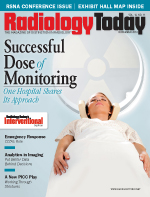 November 2013
November 2013
The Ups and Downs of Computer Assistance
By Verna Pregnon, CPC, CPC-H, CIRCC, CPC-I, CCC
Radiology Today
Vol. 14 No. 11 P. 6
When the topic of computer-assisted coding (CAC) comes up, I think of the legendary steel-driver John Henry. His fatal drilling competition with a steam-powered hammer may be the original cautionary tale about man and technology. In some ways—hopefully literally working to death is not among them—coders may feel like Henry as they battle it out against CAC. New technology may make professionals nervous about job security and wonder whether they will be replaced. However, when properly used, CAC can be a valuable industry tool.
CAC can improve consistency, productivity, and statistical data reports. It also can be integrated with other systems and online resources. Some vendors even claim their program versions can translate the EHR. Using a CAC program will allow a “canned” report to be moved quickly. If you have one particular procedure that is performed consistently, then CAC can be used to pick up the slack instead of staff. The oversight on repeat procedures can almost be brought to a minimum.
CAC seemed to be a workable system, but then I started wondering how it will affect interventional radiology. Will it work in that arena?
CAC for Interventional Coders
Those who code interventional radiology procedures can quickly see the great advantages of computer code management. They have to keep track of multiple common codes, companion codes, and many rules. These rules are a major part of interventional radiology coding, and remembering them all can be challenge. Interventional radiology is not easy; it requires coders to have a detailed mindset, so it would be great to have a program that can remember the codes and rules for you.
CAC appears functional for handling routine cardiac catheterization. But how well does it manage some of the more complex aspects, such as if the physician decides to put in a stent, explore the lower extremities, or perform revascularization?
Coders also need to consider other factors, such as physician documentation. Each provider dictates his or her reports differently. How do the different documentation styles compare with the actual procedure performed? Are there inconsistencies? When reading the reports, coders may realize the physician has performed a separate procedure, taken the catheter to a certain location without documenting how it arrived, or failed to mention the angiogram that was taken along the way. If something is missed, how will CAC react? How will CAC know when to question the physician when something does not make sense? Does the program have a default in place or does it leave the coding field blank? Coders need to ask themselves these questions when working with the CAC program.
There also is concern that an inexperienced or noncertified coder may be put in place to “push the button” and run the CAC tool. Certainly, there will need to be more involvement than just running a program. The CAC operator will still need to have the ability, wisdom, and experience to review documentation and understand the rules of interventional coding. Keeping up with the constant changes is challenging, but the operator has to be aware of them. He or she must be able to decipher between what should be coded and what should not, what was documented and what is missing, when to apply the all-inclusive codes, and when to bill the ipsilateral vs. the contralateral, etc. The coder must use the CAC resource with the understanding of these intricacies.
Don’t get me wrong; I think CAC programs have great possibilities. When the CAC tool is used in a straightforward case, the program is accurate the majority of the time. However, only by involving all parties—including IT staff, coders, physicians, and office managers—in determining how the program will be used can accuracy be ensured. The interventional radiology department will continue to need experienced coders “behind the wheel,” driving the default settings and operating these types of programs.
On the horizon, with ICD-10 implementation coming, there may be many revisions and updates to CAC programs, as the amount of information coders handle will increase greatly.
While John Henry may have combated the new technology, that doesn’t have to be the case. Coders can use CAC to their advantage and improve their overall effectiveness.
— Verna Pregnon, CPC, CPC-H, CIRCC, CPC-I, CCC, is an outpatient documentation specialist at North Shore-LIJ Health System in New York and a member of AAPC.

